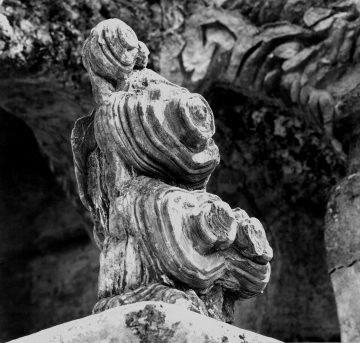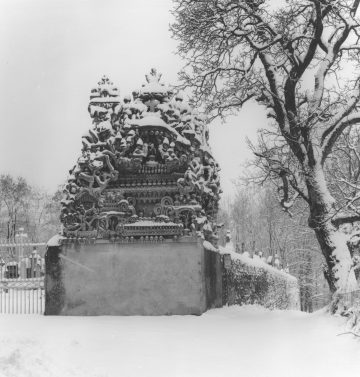Clovis PRÉVOST 1940
Clovis Prévost was born in Paris in 1940. After studying architecture at the Ecole des Beaux-Arts in Paris, he turned to film and photography. Salvador Dali was captivated by his photographic work on Gaudi’s Sagrada Familia and opened the doors of the art world to him, notably by prefacing the book La vision artistique et religieuse de Gaudi (Gaudi’s Artistic and Religious Vision) signed by Clovis Prevost with Robert Descharnes. From 1969 to 1975, he was director of the Aimé Maeght film department. He made numerous short and medium-length films, working with some of the greatest names in the art world: Antoni Tàpiès, Pol Bury, Eduardo Chillida, Joan Miro, Salvador Dali, André Malraux and Alexandre Calder. Between 1976 and 1981, with his wife Claude L. Prévost, he co-directed the television series Les bâtisseurs de l’imaginaire, presenting amateur builders from the Art Brut movement. During the same period, he made a short and a medium-length film about facteur Cheval: Où le songe devient réalité.
Palais Idéal 1980
His photographs from the Palais idéal collection show the ‘stumbling block’ of the postman Cheval and his Tomb of Silence and Endless Rest. While this first stone launched Postman Cheval into a dream that would last thirty-three years, his tomb marked the end of his art. It was after tripping over a bizarrely shaped stone during his rounds as a postman that Ferdinand Cheval decided to transform his dream of a fairy palace into an architectural reality. At the age of forty-three, he picked up the stones along the way, just as a farmer picks the fruit that has fallen from the tree. Sculpted by the waters and hardened by the sun, aren’t stones the fruits of the earth? They can be found on all the façades of the Palais idéal. This building is a hymn to nature, fraternity and life. But Postman Cheval also wanted to resist oblivion by building his work. He wrote: “Life is a swift steed. My thoughts will live with this rock. So, like the Pharaoh kings, he would have liked to remain in his fairytale architecture for eternity. However, as legislation did not allow him to do so, he had to build his Tomb of Silence and Endless Rest in the local cemetery in 1914. At the age of 78, and over a period of eight years, he produced what is often considered to be the apogee of his art. Original in every way, Postman Cheval’s last work was photographed by Clovis Prévost in the snow. In an abundance that bears a strong resemblance to the north façade of the Palais idéal, the arches and volutes make up the tomb and the modelling underlines his masterful dexterity. Still considered an original in his village, the artist left the front of the plot empty so as not to offend his neighbour. In 1994, the commune of Hauterives, which was then taking charge of managing the legacy of Postman Cheval, decided that the plot should become perpetual, in recognition of the heritage bequeathed to the commune. It has been listed as a Historic Monument since 2011.


